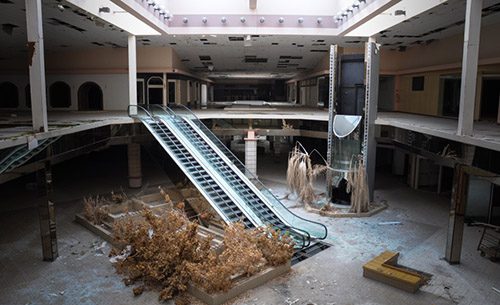
Gold in the Emerge-Tech Category!
24/08/2021
Author: Liz Fulham
As Black Friday looms, and after breaking the £1 ($1.4+) billion mark in sales in 2015, we can only wonder what 2016’s figures will bring! How will this further affect sales of brick and mortar stores?
The Decline of Brick and Mortar
Sales for U.S. retailers have diminished more than what was forecast in August, indicating a change in recent consumer-spending strength that has been supporting the economy. As high street retailing is showing an obvious decline in the UK, the very same is happening in the US. Like it or lump it, eCommerce is growing; the third quarter of 2016 saw a $141 billion spend in online sales, 11.3% more than the same quarter in 2015.
This dramatic shift towards online shopping that has crushed U.S. department stores in recent years, now threatens investors who have funded the vast expanse of many of these sprawling, urban malls that a lot of Americans simply don’t visit anymore. As a European, I noticed during my travels in the US that many high-street malls seem to have low footfall when compared to their European counterparts.
Refinancing in the Current Climate?
According to Morningstar Credit Ratings, almost $128 billion of commercial real estate loans, of which more than 25% financed malls a decade ago, are due to refinance between now and the end of 2017. Wells Fargo also estimates that roughly $38 billion of these loans were taken out by retailers, and bundled into commercial mortgage-backed securities (CMBS) and sold to institutional investors. However, underwriters including Deutsche Bank and Morgan Stanley are now forecasting that around 50% of all CMBS maturing in 2017 could struggle to refinance based on current terms. Commercial mortgage debt holders often pay back only the interest, and the principal must be refinanced.
This crunch in the commercial loans market means that holders of nonperforming debt, such as pensions or hedge funds, stand to lose money. The mall owners, mostly real estate investment trusts, have avoided major losses because they can often shed their debt through an easy foreclosure process. According to Wells Fargo, cumulative losses from many 10 year CMBS loans (issued between 2005 and 2007) already reach $32.6 billion – a big jump from the average $1.23 billion incurred annually in the prior decade!
What Does the Future Hold?
The Internet is changing the world we live in, challenging the old way of doing business. Nothing is a sure bet anymore, as money is transferred so freely around the world. It is expected that online shopping will continue to grow and put pressure on high street sales, while refinancing of commercial loans will be a tough discussion in light of this changing market!









